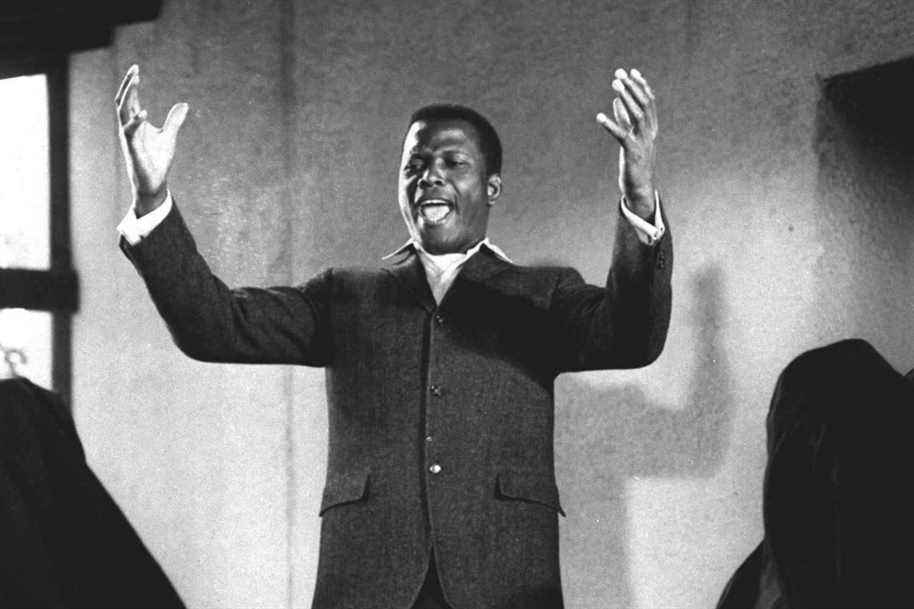My heart skipped a beat, a tear flowed: Sidney Poitier died, 13 years after my father, his contemporary. Every time I saw him, I thought I saw my father. That’s how he’s always been a part of my life, long before I saw his films, knew he fought for civil rights, and read his autobiography.
Posted at 1:00 p.m.
In The Measure of a Man, Sidney Poitier said that it was difficult to say where he came from. “Poitier is a French surname, associated only with blacks in the Bahamas. Since the Bahamas was an English colony, my ancestors probably came from Haiti, the nearest French colony. ”
My father was Haitian. Is it possible that he has common ancestors with Sidney Poitier? I always liked to believe it. He had the same height, the same elegance, the same dignity.
In the movie To Sir, with Love, Sidney Poitier played the role of a teacher, while my father was a teacher. This coincidence reinforced, in my child’s head, the impression that our families were linked.
In the movie In Heat of the Night, Mr. Poitier is stopped at the wheel of his vehicle because he is black. However, it is a detective sergeant from Philadelphia who came to lend a hand to the racist police in Mississippi. While asking questions of the most powerful man in the town where the murder was committed, this man slaps him. The character played by Mr. Poitier retaliates. This scene was added to the script at his request.
By returning that slap, Sidney Poitier does a revolutionary act for a black man, thus regaining power.
The film dates from 1967, the action takes place in Mississippi, which was the scene of 600 lynchings between 1882 and 1968. Civil rights claims are at their peak.
We understand the symbolic and social importance of this gesture. It is this dignity that my father transmitted to us: to refuse to deny our humanity.
While she was Haitian, when you saw my mother, you would have sworn she was Italian or Spanish. Her face and physiognomy were reminiscent of Penélope Cruz in Volver. My parents, who were a biracial couple, in a way personified the couple of Guess Who’s Coming to Dinner, film released in 1967, year of the Expo, the year my parents immigrated to Quebec. Their couple knew the look invoked by the father of the white bride.
“There will be 100 million people right here in this country who will be shocked and offended and dismayed, and you two will just have to put up with that, maybe every day, for the rest of your life.” You can try to ignore these people, or you can feel sorry for them, for their prejudices, bigotry, blind hatred and stupid fears, but, if necessary, you will have to hold on to each other and say “to hell with all these people”! “
This film illustrates how liberal-minded people can take offense when equality becomes a tangible reality. I take the tensions among white parents as proof. The mother accepts this biracial marriage, while the father, citing that the couple will face the insurmountable barriers of racism, opposes it. As for Poitier’s parents, they are shocked that his fiancée is white.
This film demonstrates how complex social changes are. They require both introspection and the deconstruction of prejudices and social discourses.
The message of the film: for a black person to be accepted, he must be respectable. This is why this film has been sharply criticized by more radical black activists.
Respectability means that the worth of blacks is assessed according to the values of the dominant group (whites). The goal of respectability is to create a bond between whites and blacks. This is why, in the 1960s, civil rights marchers “wanted to look presentable”, so that white people would say, “They are respectable, they are no different: we can join their cause.” ”
However, sharing values does little to solve systemic problems.
Respectability also explains the intragroup ban. By emphasizing the similarities with whites, some blacks sideline other “less respectable” blacks, since they embody negative stereotypes.
This standard can be deployed to control black behavior and legitimize injustices. As standards of respectability fluctuate, black people may never meet them.
Faced with these criticisms, Sidney Poitier replied: “As for my role, all I can say is that there is a place for people who are angry and provocative, and sometimes they serve a purpose, but it was never my role. ”
Sidney Poitier believed that the energy of anger could become a creative force. He said, “I have learned that I must find positive outlets for my anger, otherwise it will destroy me. There is a certain anger which reaches such an intensity that, to express it, one would need murderous rage. Its flame burns because the world is unjust. I have to find a way to channel this anger to the positive, and the highest positive is forgiveness. ”
Thank you to the hero who is Sidney Poitier, who only learned to read at the age of 16. He wrote his own verse, as Walt Whitman said in the poem O Me! O Life. This verse allowed other blacks to write theirs, them who have long been confined to the margins of our societies.

